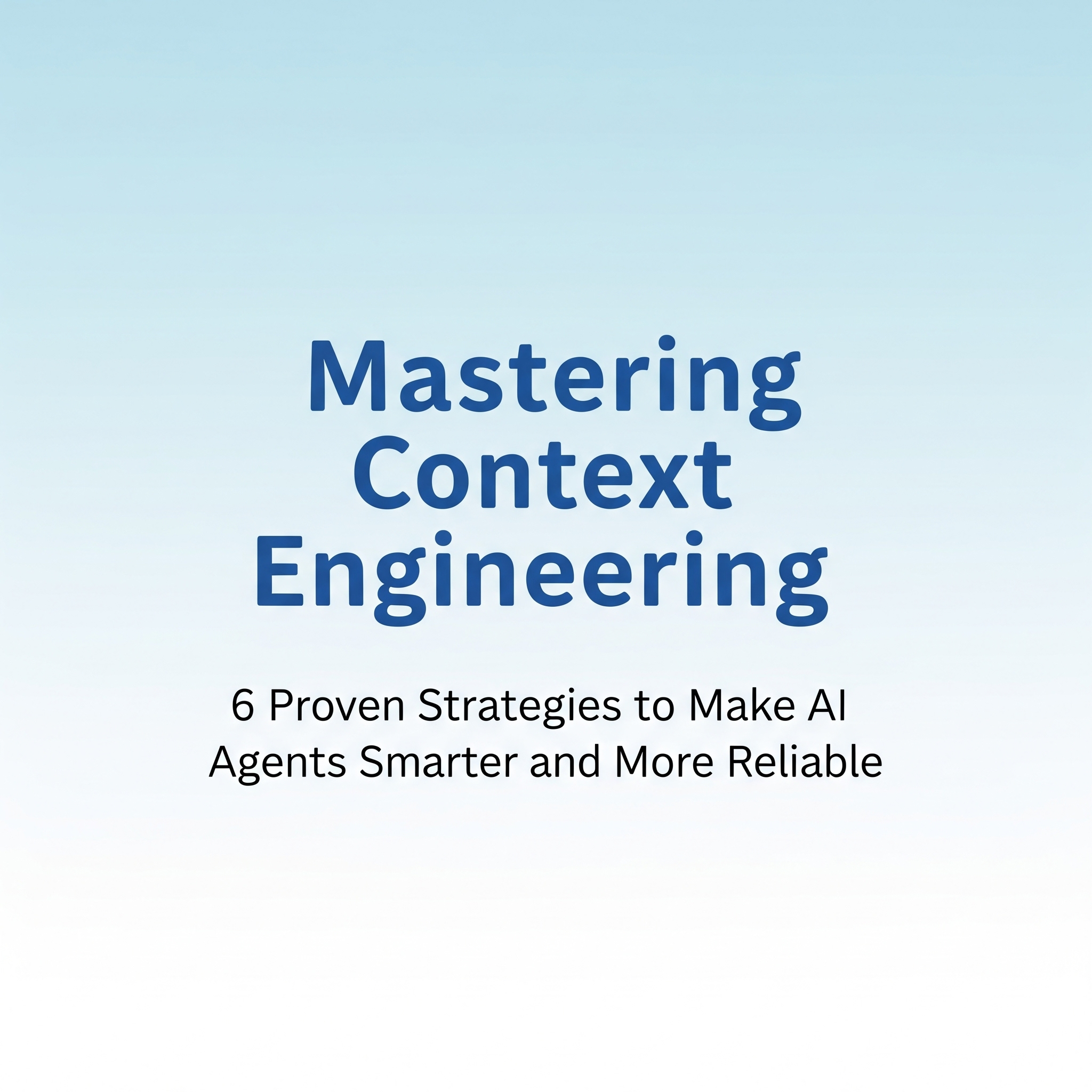In today’s fast-paced AI landscape, building a powerful large language model (LLM) is only half the battle. The real challenge lies in ensuring the model understands the right context to deliver accurate, relevant, and goal-aligned results. Without context, even the most advanced AI agents risk producing inconsistent and misleading outputs.

Context Engineering is the process of structuring, delivering, and maintaining the information an AI needs to think critically, make better decisions, and stay aligned with your objectives. Done right, it transforms an AI from a generic text generator into a dependable, high-performing problem solver.
In this guide, we’ll explore six powerful context engineering techniques that will help you unlock the full potential of your AI agents.
1. Instructions – Set the Stage with Clarity
Before your AI agent begins any task, it needs a clear definition of role, purpose, and objectives. This ensures the model interprets tasks through the right lens.
- Who: Assign a role (e.g., “Act as a senior financial analyst”).
- Why: Explain the bigger picture and the value of the task.
- What: Define success criteria and measurable outcomes.
Pro Tip: The clearer your instructions, the fewer misunderstandings the AI will have, reducing wasted processing time and irrelevant answers.
2. Requirements – The AI’s “How-To” Blueprint
Think of requirements as the AI agent’s operating manual—a step-by-step guide that outlines exactly how to execute the task.
Include:
- Detailed workflows and processes
- Style and formatting guidelines
- Performance and security standards
- Output formats (e.g., JSON, Markdown, plain text)
- Positive and negative examples to reinforce desired behavior
Why It Matters: Negative examples are especially valuable—they prevent the AI from repeating common mistakes by clearly showing what not to do.
3. Knowledge – Supplying Relevant Information
An AI agent is only as smart as the data you feed it. Supplying rich, relevant knowledge ensures the model has the contextual grounding it needs.
- External Context: Industry trends, market data, regulatory insights
- Task-Specific Context: Internal workflows, product details, company documentation
- Structured & Unstructured Data: Reports, spreadsheets, APIs, and FAQs
Pro Tip: Treat this as a comprehensive pre-briefing before the AI starts any work.
4. Memory – Helping the AI Remember
Memory is the bridge between isolated interactions and consistent long-term performance. Without it, the AI starts every task from scratch.
- Short-Term Memory: Holds recent conversation history and reasoning steps
- Long-Term Memory: Stores user preferences, learned patterns, and past interactions
Implementation: Memory can be maintained through vector databases, session logs, or specialized orchestration tools to ensure the AI retains useful information over time.
5. Tools – Defining What’s Available
If your AI agent can use tools—such as APIs, databases, or custom functions—it needs clear documentation on how to use them effectively.
Include:
- Tool descriptions and purposes
- Usage instructions
- Required input parameters
- Expected return values
Why It Matters: Tool descriptions act like micro-prompts, giving the AI precise guidelines for execution.
6. Tool Results – Closing the Feedback Loop
The process doesn’t end with tool execution—AI agents need to interpret and act on the results.
A strong feedback loop involves:
- AI requesting tool execution in a structured format
- System returning results in a clear, consistent structure
- AI refining its reasoning and proceeding based on the output
Result: The AI stays on track, improves accuracy, and makes better decisions over time.
Conclusion
The difference between an AI agent that’s merely functional and one that’s consistently high-performing often comes down to context engineering. By combining clear instructions, well-defined requirements, rich knowledge inputs, memory systems, tool documentation, and feedback loops, you give your AI the structured environment it needs to perform at its best.
In the age of intelligent automation, context isn’t optional, it’s a competitive advantage. Businesses that master context engineering will see their AI agents deliver not only accurate outputs but also insightful, goal-aligned decisions that drive real results.
Related Reads
- LangChain vs LlamaIndex: Powerful Retrieval-Augmented Generation Tools Compared
- 20+ Mind-Blowing LLM Apps You Can Build Today – From AI Agents to RAG Pipeline
- Top10 Beginner-Friendly LLM Projects to Kickstart Your AI Journey
- LLM Agents: What They Are, How They Work, and Why They’re the Future of Autonomous AI
- 10 Free GitHub Repositories to Build a Career in AI Engineering
External Resources
Prompting Guide – Context Engineering Guide
https://www.promptingguide.ai/guides/context-engineering-guide
Akira AI – Context Engineering: The Complete Guide
https://www.akira.ai/blog/context-engineering
LangChain Blog – Context Engineering for Agents
https://blog.langchain.com/context-engineering-for-agents
LlamaIndex Blog – What is Context Engineering?
https://www.llamaindex.ai/blog/context-engineering-what-it-is-and-techniques-to-consider
DataCamp – Context Engineering: A Guide with Examples
https://www.datacamp.com/blog/context-engineering


5 thoughts on “Mastering Context Engineering: 6 Proven Strategies to Make AI Agents Smarter and More Reliable”